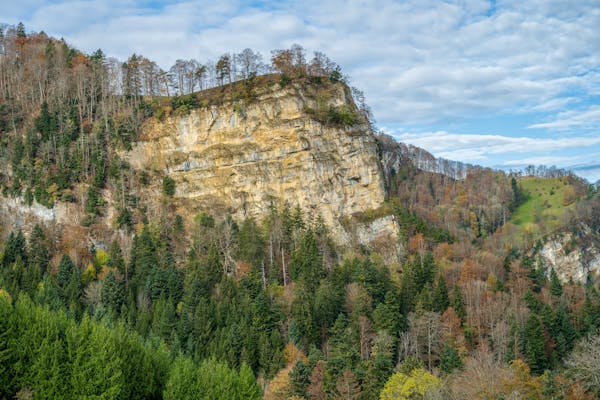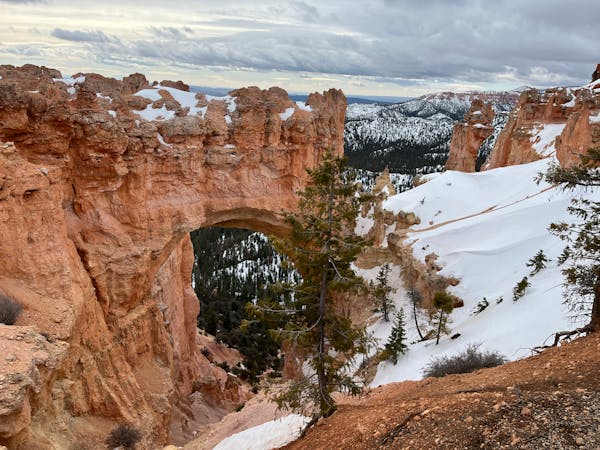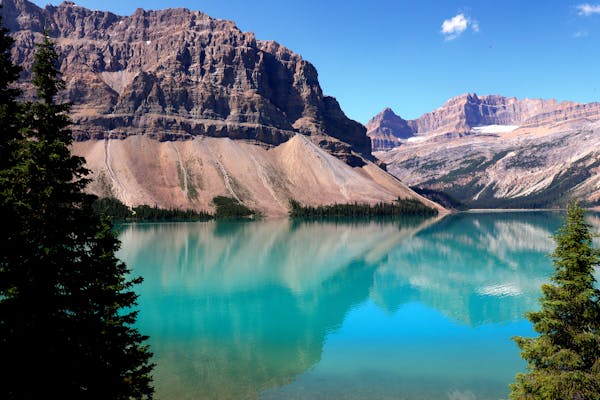The Ultimate Guide to Hiking Katahdin. Hiking Katahdin, the highest peak in Maine and the northern terminus of the Appalachian Trail, is an adrenaline-filled adventure that attracts trampers from each over. Standing at 5,269 bases, Mount Katahdin offers some of the most beautiful views in New England, along with a variety of hiking routes to suit different skill situations. This companion covers everything you need to know about hiking Katahdin, from trail options and difficulty situations to essential gear and safety tips.
1. Choosing Your Trail The Stylish Routes for Hiking Katahdin
The Popular Hunt Trail
The Hunt Trail is the sanctioned route for Appalachian Trail thru-trampers reaching Katahdin. This 5.2-Afar trail is known for its grueling sections, including steep gemstone scrambles and exposed crests, making it suitable for educated trampers. The stirring panoramic views along the trail, especially at the peak, make the trouble worthwhile.
The Cathedral Trail for the audacious
The Cathedral Trail is considered one of the further emphatic routes up Katahdin, known for its steep, rocky terrain and challenging scrambles. The Ultimate Guide to Hiking Katahdin. Starting from Chimney Pond, this 1.7- afar trail is short but violent, leading trampers over large boulders. This trail requires excellent physical exertion and a good head for heights but prices come with inconceivable views and a thrilling rise.
2. Preparing for Katahdin’s Weather and Conditions

Understanding Katahdin’s Variable Weather
Weather on Mount Katahdin can change fleetly, indeed during the summer. Temperatures can drop suddenly, and high winds are common near the peak. The Ultimate Guide to Hiking Katahdin. It’s pivotal to check the cast before your hike and come set with layers to acclimatize to changing conditions, icing a safe and comfortable rise.
Dealing with the rudiments on the Summit
Reaching the peak of Katahdin frequently means facing strong winds and cooler temperatures. Bring a windproof jacket and chapeau to stay defended from the rudiments. Being prepared for unforeseen rainfall shifts is essential, as the exposed peak offers little protection, making it easy for trampers to witness unforeseen drops in temperature.
3. Essential Gear for Hiking Katahdin
Footwear and Clothing for Challenging Trails
The rough terrain of Katahdin demands sturdy, high-quality hiking thrills with good traction. Choose thrills that give ankle support to navigate the rocky paths and scrambles. Wear humidity-wicking base layers to keep sweat at bay and dress in layers, with a leakproof jacket on hand for unanticipated rain.
Packs and inventories for a Full-Day Hike
Bring a well-fitted pack with rudiments like water, snacks, a first-aid tackle, and navigation tools. Plan for a full-day hike, as the utmost trails up Katahdin take 6-10 hours to complete. The Ultimate Guide to Hiking Katahdin. Carry at least 3 liters of water, as there are no water sources on the upper sections of the trail.
4. Physical Fitness for Hiking Katahdin
Building Abidance for the Climb
Hiking Katahdin requires a good position of physical fitness, especially on steeper trails like Cathedral and Hunt. Prior to the hike, prepare with cardio and leg- strengthening exercises similar to stair climbing, squats, and lunges. Perfecting your abidance will make the rise easier and help you attack the emphatic sections confidently.
Preparing Mentally for Katahdin’s Challenges
Mental preparedness is crucial when hiking Katahdin, as the rise can be boarding. Some sections bear careful footwork and focus due to narrow paths and exposed ledges. Approach the hike with tolerance and stay calm, knowing your capabilities, which will help you navigate grueling areas with confidence.
5. Hiking Katahdin Safely Trail Form and mindfulness
Staying safe-deposit box on Narrow and Exposed Paths
numerous of Katahdin’s trails feature narrow paths and exposed ledges where caution is necessary. Take your time on these sections, maintaining steady footing and esteeming other trampers’ space. Trampers should yield to those descending, and always communicate easily when passing on narrow paths to avoid accidents.
Being Aware of Wildlife on the Trail
Mount Katahdin is home to different wildlife, including moose and black bears. Stay alert and keep a respectful distance from any creatures you encounter. However, avoid direct eye contact and make yourself look larger, If you see a bear. Proper food storehouses and carrying out all trash also help to attract wildlife near the trail.
6. Navigating Katahdin’s Rock Scrambles and Steep Sections

Using Proper Fashion on Rock Scrambles
Rock scrambles are common on trails like Cathedral, where trampers must climb over large boulders. Use your hands and bases to maintain three points of contact with the gemstone, and move sluggishly to ensure stability. Scrambles bear balance and strength, so take frequent breaks and assess the stylish route forward.
Diving the Steepest Sections Safely
On steep sections, like the Knife Edge and portions of Hunt, trampers should lean forward slightly to maintain balance and avoid leaning back. Keep your body near the gemstone face for stability, and take a lower, deliberate way. Stay focused and avoid rushing, as these areas bear careful attention to footing.
7. Stylish Times to Hike Katahdin and Seasonal Tips
Summer and Early Fall Ideal Hiking Seasons
The stylish times for hiking Katahdin are from late spring to early fall, generally June through October. During these months, trails are substantially clear of snow, and the rainfall is milder. Early fall brings stunning leafage views, adding to the scenic experience, while summer offers further daylight hours for a longer hiking window.
Challenges of Hiking in Late Fall and Downtime
Late fall and downtime hikes up Katahdin are largely grueling and should only be tried by educated downtime rovers. Snow and ice make the trails dangerous, and temperatures can dip. Those planning a downtime hike should be equipped with crampons, an ice dismissal, and downtime hiking chops to navigate the icy terrain safely.
8. Environmental Stewardship and Leave No Trace

Rehearsing Leave No Trace Principles
To cover Katahdin’s natural beauty, trampers should cleave to Leave No Trace principles. Carry out all waste, avoid picking shops, and stay on designated trails to minimize impact on the terrain. Esteeming the geography preserves it for unborn generations and maintains the ecosystem’s balance.
Staying on pronounced Trails to cover Flora and Fauna
Straying off-trail can damage Katahdin’s delicate foliage and disturb wildlife territories. Follow trail labels and stay on established paths to help corrosion and maintain trail integrity. The National Park Service works hard to save this area, and staying on trails helps support their conservation sweats.
FAQs About Hiking Katahdin
- How delicate is hiking Katahdin?
- Hiking Kathrin is considered emphatic, with rocky terrain, steep inclines, and exposed crests. It requires good physical fitness and medication, especially on trails like Cathedral and Knife Edge.
2. How long does it take to hike?
- A full-day hike on Katahdin can take anywhere from 6 to 10 hours, depending on the trail and fitness position. Starting beforehand in the morning is recommended to allow plenitude of daylight for the descent.
3. What permits are needed for hiking Katahdin?
- Permits are needed to pierce Baxter State Park, where Katahdin is located. Reservations for parking and permits should be made in advance, as the demesne limits diurnal callers to cover the terrain.
Key Tips for a Successful Katahdin Hike
- Start Early: Begin your hike at daylight to allow ample time for both ascent and descent.
- Check the Weather: Weather changes snappily; check vaccinations and be prepared for rapid-fire shifts.
- Pack rudiments: Bring a plenitude of water, high-energy snacks, layers, and a chart.
- Know Your Limits: Katahdin is demanding; turn back if you feel fatigued or unsafe.
- Respect Wildlife: Keep a safe distance from creatures and store food duly.
Conclusion
Embrace the Challenge of Hiking Katahdin
A Rewarding Adventure in the Heart of Maine
Hiking Katahdin is a physically demanding but deeply satisfying adventure. The stunning views, different trails, and sense of accomplishment make the rise indelible. With the right medication and respect for the mountain’s challenges, you can completely enjoy the beauty and solitariness that Mount Katahdin offers.
Preparing courteously for a safe deposit box and pleasurable Experience
Whether you’re an educated tramper or diving Katahdin for the first time, medication is crucial. Equip yourself with the right gear, knowledge, and internal readiness to navigate the rugged terrain. By esteeming the terrain and embracing the challenge, hiking Katahdin can become one of the most memorable out-of-door gests of your life.
In conclusion, hiking Katahdin is an extraordinary experience that requires physical fitness, medication, and respect for the terrain. With careful planning and adherence to safety guidelines, this iconic New England peak offers stirring views and a true adventure for those ready to take on the rise.


[…] fittings refers to the high-quality fittings handed by Grupo Cuñado. A leader in the force of pipes, faucets, and fittings essential for artificial sectors. Moreover, […]